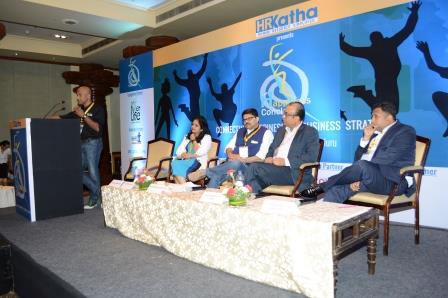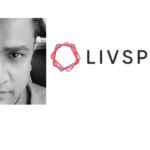Corporate wellness initiatives should also focus on how people’s personal and social lives can be made happy.
‘Change is the new constant’ and this is why one of the sessions at The Happiness Conclave—held by HRKatha on the 29th of April, at the Taj Vivanta, Bengaluru— was focussed on tackling mundane jobs and their impact on employee happiness and productivity consecutively. The session was moderated by Arvind Krishnan, CEO, The Fuller Life, while the other members of the panel were Shalini Pillay, head-people, performance & culture, KPMG; Ramendrajit Sen, head-human resources, Hewlett Packard Enterprise – India; Sriharsha Achar, chief people officer, Apollo Munich Health Insurance Company and Shreeram Varahan, head-HR, India and global operations centres, Thomson Reuters.
The session commenced with Krishnan establishing a background, illustrating examples from history. He said, “For till the last century, farmers were used to doing everything themselves, right from milking to planting and so on. Then suddenly, the first industrial revolution came in, productivity increased and specialisation also gained importance, consequently. Now, specialisation is quite the recipe for monotony”. “In the last two years, we’ve come to a state where less than 50 per cent of our population is now engaged in agriculture”, he shared. This means there is massive urbanisation and industrialisation. When such development happens, mundane jobs are sure to follow and the reality now, is that mundane jobs exist both for the blue and white collar sectors. Data shows that one in ten people in India requires help for mental health reasons and one in six is diabetic.
Initially no job is mundane as it fulfils a certain need. What makes a job mundane is the course of time, in terms of where people want to reach and whether the job fulfils their long-term goals.
With that in mind, Krishnan asked Pillay about the symptoms of a workplace that show whether the work is getting monotonous or repetitive in some way. She said, “While walking in at work when you see happy and motivated individuals with smiles on their faces, you get a positive feeling. Just one glance around, and you can feel the happiness quotient.” Achar added, “As soon as you enter the workplace, you get positive vibes from people; bright colours around also mean people are happier than offices where the ambience seems dark”.
Then Krishnan asked the panel about the long-term downsides or upsides of monotonous work, to which Sen replied, “One of the key drivers of happiness is fulfilment of basic needs. Each person takes up a job because he/she has a basic need to fulfil. So, initially no job is mundane as it fulfils a certain need. What makes a job mundane is the course of time, in terms of where people want to reach and whether the job fulfils their long-term goals”. It is difficult to make everyone happy, so what HR needs to do is create an environment for the individual to be successful.
Sen said, “Companies do a lot of things knowingly or unknowingly, and one such thing is creating a positive environment. It can be accomplished through something as simple as having a nice ambience in office. Also, a lot of people fake happiness. It is for the managers to walk up to them, converse, pat them on their backs and try to transform that fake happiness into reality. The social or personal happiness of people also reflects in their work. According to Sen, corporates looking into wellness initiatives should also focus on how they can make people’s personal and social life happy. That might not directly impact the job but will make a difference to those people and their job-related inputs.
As soon as you enter the workplace, you get positive vibes from people; bright colours around also mean people are happier than offices where the ambience seems dark.
Varahan added that increasing the complexity of the job will make people more engaged, as they will start thinking and innovating differently. “Just challenge the status quo”, he said. Simply because people have been doing a specific thing in a certain way, doesn’t mean they will have to continue doing so. There can be various new ways to perform the same task differently.
Pillay then described an initiative that they run at KPMG in order to help people find meaning in their jobs—“We started the ‘purpose initiative’ about 18 months ago with a belief that each employee has joined this organisation with a purpose in mind. Our aim is to get down to the level of the individual and find out each one’s purpose. The objective is to help them find a match between what they want to do and what the organisation is doing. With this, we truly believe we’ll have happier individuals. Therefore, we tried to understand their purpose right from the recruitment stage. We got various responses from youngsters on why they had chosen KPMG – ranging from money, to building a CV, to being a part of the brand. Surprisingly, someone wanted to be there to find a good life partner. It made great sense to us, as someone who is here to find a life partner would be at his best every single minute!”
Companies do a lot of things knowingly or unknowingly, and one such thing is creating a positive environment. It can be accomplished through something as simple as having a nice ambience in office.
Going forward, Krishnan stated that the challenge for happiness lies at three levels –how an individual remains happy in personal and professional life; how HR ensures a happy workforce; and lastly at the organisational level. To balance out individual happiness in personal and professional life, Sen shared that at Hewlett Packard Enterprise, they try to engage the family of employees through office visits, giving them an opportunity to see their place of work and learn about what they do every day. The company is also trying to support youngsters’ interests, for which they have created an employee resource group to fund and encourage some of the hobbies.
Varahan also shared that in addition to insurance policies and the employee resource group, every year they celebrate an ‘employee connect‘ day. The purpose of this day is to make employees understand what they are doing, how their actions impact the bigger picture, and how they add to the organisational revenue. This initiative helps people understand how much they matter to the business. “We also have a concept called ‘mood elevator’ wherein someone on a curiosity level, can be helped to move up to the positive, happy, motivated and engaged level. Those below the curiosity level may be stressed and demotivated. HR would then help them move up to the curiosity level, and so on”, Varahan said.
As a proof of the happiness quotient in an organisation even in times of change, Achar shared an interesting example from Apollo Munich Health Insurance. They recently underwent major restructuring. From a completely centralised structure operated from Gurgaon, they moved to a decentralised approach with five zones in the country. There were about 65 positions that came up and amazingly all got filled up by internal resources except for two. This also proved that people now understand that in order to grow they might need to move geographically.
Adding to the growth factor, Pillay said, “It’s about embedding how we help them achieve their purpose, and letting them know that growth and learning are a part of that. KPMG has a vast spectrum of services and someone who would have joined in audit would be well groomed in that vertical, but by allowing that person the opportunity to move around and take up other roles, we make sure his learning curve does not flatten”. It is motivating for the employee but the challenge for HR is to plan a career progression. That is where L&D comes in to help upskill the person. To make sure that employees stay engaged, HR needs to keep them challenged and satisfied with their every day chores.
To make sure that employees stay engaged, HR needs to keep them challenged and satisfied with their every day chores.
On handling the very dynamic millennials and their concept of happiness and satisfaction, Varahan stated that “Growth is now seen as – doing more with less. So, instead of making them move verticals, we allowed them secondment opportunities. This means, they continue doing what they do, but in addition they can do something for which they get a secondment bonus”. Varahan shared that they also identify highly talented resources and have them remotely support other countries. For example, the maternity leave in Poland is for one year, which can be extended to another two years. So, to help out companies in Poland they offer opportunities to their talent for remote operation for a year or two, making them visit just once or twice in between. This allows the high performers to showcase their talent, while gaining extra experience in addition to their daily jobs.
Talking of millennials, Achar said, “Expectations of millennials are difficult to match as they are always looking for something more. The average age in our organisation is about 26 and the challenge we face is how to make the older ones think their 26-year old colleagues do”. Changing the mentality of the people at the top is a bigger challenge than handling the millennials. “There is a difference in the way we think about work–life balance, and the way millennials look at it. For them it’s about stopping at 6 pm, whereas we look at it as work– life harmony. That is what brings in a dichotomy”. Thus, the session concluded on the note that bringing in complexity in jobs and helping people find a purpose in what they do is the key to overcoming the monotony of everyday job.
(The Happiness Conclave organised by HR Katha was held at Taj Vivanta, Bengaluru, on April 29, 2016. The sponsors and partners for this event were The Fuller Life, NHRDN-Bengaluru Chapter, PeopleWorks, Giftxoxo and Kommune Brand Communications.)
Value our content... contribute towards our growth. Even a small contribution a month would be of great help for us.
Since eight years, we have been serving the industry through daily news and stories. Our content is free for all and we plan to keep it that way.
Support HRKatha. Pay Here (All it takes is a minute)




































